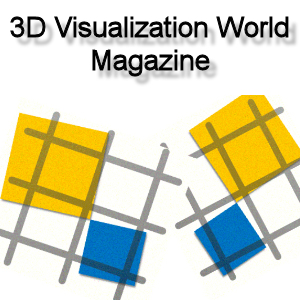SUBMISSION POLICY
Double Submissions
By submitting a manuscript to the SIGGRAPH Asia Technical Papers program, authors acknowledge that the technical contributions they claim have not been previously published or accepted for publication in another peer-reviewed venue, and that no manuscript substantially similar in content is currently under review, or will be submitted to any peer-reviewed venue during the SIGGRAPH Asia review period. Violations constitute grounds for rejection.
Plagiarism
A submission to the SIGGRAPH Asia Technical Papers program should describe an original work of the authors. Authors must not use ideas or content originating from others without properly crediting their original sources. Note that such sources are not limited to peer-reviewed publications, but also include patents, textbooks, technical reports, theses, unpublished work posted on arXiv, as well as other posts on the World Wide Web. Failure to comply with this requirement will be considered plagiarism and result in rejection.
Prior Art
Authors are expected to cite, discuss differences and novelty, and compare results, if applicable, with respect to relevant existing publications, provided they have been published in a peer-reviewed venue. This also applies to patents, which also undergo a professional reviewing process.
But what about technical reports, and other non peer-reviewed publications, such as technical reports or papers posted on arXiv, which we henceforth refer to as prepublications? With the rapid progress of search engines and the increased perusal of arXiv papers by the scientific community, asking authors to thoroughly compare their work to these prepublications imposes an unreasonable burden: a seemingly relevant report that is incomplete in its disclosure or validation might appear online shortly before the deadline. While peer-reviewed publications are certainly not immune to these shortcomings, they have, at least, been judged sufficiently complete and valid by a group of peers. Consequently, authors are not required to discuss and compare their work with recent prepublications (arXiv, technical reports, theses, etc.), although they must properly cite those that inspired them (see “Plagiarism” above). We nevertheless encourage authors to mention all related works they are aware of as good academic practice dictates. Note that with new works posted on arXiv on a daily basis, it is increasingly likely that reviewers might point out similarities between the submitted work and online reports that have been missed by the authors. In this case, authors of conditionally accepted papers should be prepared to cite these prepublications in their final revision as concurrent work, without the burden of having to detail how their work compares to or differs from these prepublications.
Preservation Of Anonymity
The SIGGRAPH Asia review process is 60 percent double-blind (three out of five reviewers do not know the identity of the authors). This anonymity is often regarded as instrumental to the fairness of the review process, so authors are required to take reasonable measures to preserve their anonymity. Specific instructions for preserving anonymity are discussed in the Submission Requirements section. Below, we discuss specific situations where authors have to cite their own publications and how to handle such disclosures in the context of a SIGGRAPH Asia submission.
Public dissemination of submitted papers, whether by posting them online or by delivering them as talks, is strongly discouraged, insofar as it may destroy your anonymity. However, we recognize that PhD students looking for jobs must give job talks. We also recognize that laboratories looking for funding may need to publicize their latest research. Authors should simply use restraint whenever possible: be aware that reviewers may become annoyed if they see blatant or unjustified violations of anonymity.
When citing already published work by the same (or an overlapping) group of authors, the citation should refer to that work in the third person, just as it would refer to any other previously published work by a completely different set of authors. For other relevant work from the same author(s) as the submission, we distinguish between two cases: (A) works that have been submitted for publication elsewhere, but have some relevance to, and/or overlap with the submission; and (B) largely overlapping prepublications that are available online at the time of submission (arXiv, technical report, thesis, etc.).
- For case (A), the other work should be cited anonymously, as well as provided as anonymous supplementary material. The authors must convince the reviewers that the current submission is sufficiently different from the other work, which can be done using an anonymous cover letter that outlines the differences.
- For case (B), it is not necessary to provide the prepublications as anonymous supplementary materials. It suffices to cite them in the bibliography. The bibliography entry should read “Anonymous” in lieu of the authors’ names, making it clear that the work is by the same authors as the submission. The entry should also be clearly recognizable as a prepublication declaration using a standard tag such as “non-peer-reviewed prepublication by the authors” or the like. Any prepublication the reviewers might discover should correspond to a bibliography entry, which will avoid potential suspicion of plagiarism.


